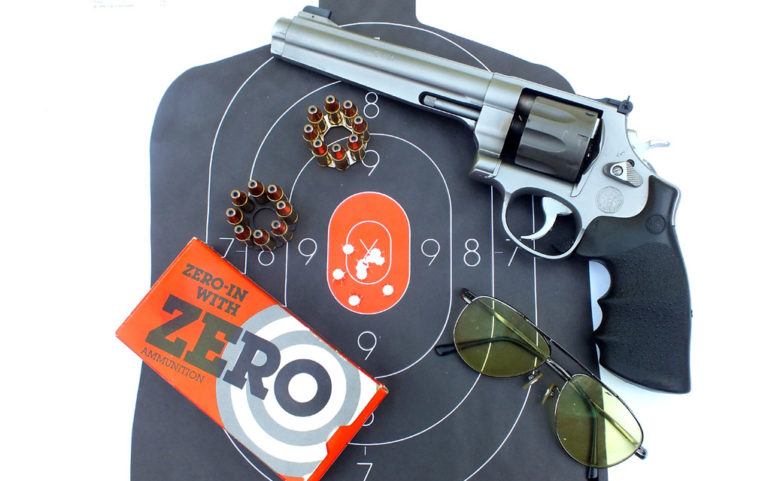
The Smith & Wesson 929 is a high-quality, moon-clip-fed 9mm revolver that’s ready for anything.
What to know about the Smith & Wesson Model 929:
- The Model 929 is based on Smith & Wesson's N-Frame revolver.
- Because of its larger frame, it holds eight rounds of 9mm.
- Being a Performance Center gun, the 929 has a slick trigger and a compensator.
- For what you get, the 929 has a pretty respectable MSRP of $1,189.
Before the .50 BMG, before the .30-06, before the .45 ACP — and before dozens of popular modern calibers — there was the 9mm Luger round. Also referred to as 9mm Parabellum, 9mm NATO and 9x19mm, it was developed in 1902 by Georg Luger for what eventually became the German P-08 pistol, commonly called the Luger. The 9mm Luger round might have been around for a long time, but it’s more popular in spades than any pistol caliber introduced since.
For commercial consumption, 9mm Luger is the most popular centerfire caliber … and for good reason. It’s the most economical centerfire caliber to shoot, sometimes getting remarkably close in price to .22 Long Rifle. It’s a great round for training because recoil is manageable for new shooters. It’s powerful enough for personal defense thanks to modern developments in bullet construction, and finally, it allows about 30 percent more magazine capacity than other popular defensive calibers.
Devising A 9mm Revolver
So, if the 9mm Luger is such a great round, why have 9mm revolvers only been available recently? The answer is extraction. The cartridges originally designed for revolvers all achieved their headspace on the rim, and that rim served double duty, also allowing easy extraction in revolvers. Rimmed cartridges create problems in magazines so, like most cartridges designed for semi-automatic pistols, the 9mm Luger normally headspaces on the case mouth.
There’s no problem making a revolver fire a rimless case; the problem comes when you extract the fired case. Of course, single-action revolvers use a different extraction system that doesn’t use the cartridge rim, allowing Ruger to make a Blackhawk .357/9mm convertible revolver several decades back.
The original solution for rimless cartridges in double-action guns came when the U.S. Military wanted to use .45 ACP ammunition in the large-frame revolvers made by Colt and Smith and Wesson. The solution was the moon clip. The original moon clips held three .45 ACP cartridges and were crescent shaped, hence the name. Two moon clips would fill the cylinder of a M1917 revolver and allow extraction of the rimless .45 ACP round. To allow revolver use without moon clips, the .45 Auto Rim cartridge was created.
It took almost a century for someone to adapt the same solution to the 9mm Luger. In 1993, Smith and Wesson introduced a J-frame revolver chambered for 9mm using full moon clips. Instead of being crescent shaped and holding half a cylinder load, full moon clips are circular and hold a full cylinder load. Consensus is that the company dropped the model in 1993 because of poor sales. Taurus brought out a moon clip-equipped 9mm revolver in 2012, and in 2014 Ruger introduced its popular LCR in 9mm using a five-shot full moon clip system.
 S&W’s 929 Wheeled ‘Nine’
S&W’s 929 Wheeled ‘Nine’
In 2014, Smith and Wesson introduced the first competition-capable moon clip pistol, the Model 929 and 986 Performance Center revolvers. The 986 is based on the smaller L-frame and is a seven-shot revolver. The 929 reviewed here is on the larger N frame and is an eight-shot gun. The cylinder is titanium, and the rest of the gun is matte finish stainless steel. For better contrast, both the pinned-in, Patridge front and adjustable rear sight are black.
The 929 is a Performance Center competition revolver and is adorned with Jerry Miculek’s signature on the right side plate. When I received the test gun, I looked up my photos from the 2012 Bianchi Cup and sure enough, the gun I got looks remarkably like Jerry’s competition gun in my wife’s hands. The differences I could see were that Jerry swapped the Patridge front sight for a red ramp front, bobbed the hammer, and used an un-fluted cylinder.
Barrel length of the 929 is 6.5 inches with a full-length under-barrel ejector shroud that tapers and is slightly reminiscent in appearance of the Remington percussion revolvers of the past. The gun comes out of the box with a compensator, but the box contains a muzzle cap that interchanges with a single Allen screw. There’s a larger-than-standard hammer surface, and the trigger has an overtravel adjustment screw.
As a Performance Center gun, the double-action trigger pull is predictably smooth and relatively light. The single-action pull was also clean and crisp, but as a competition gun, almost no one will use single action. The grip is a black synthetic one-piece unit with finger grooves.
 The True Test
The True Test
Because this is a competition gun, I decided to shoot a match with it. I’m perfectly willing to try almost any kind of match, but I hold no illusions I’m going to win the match. For shooting the match, I chose the Blade-Tech OWB holster my wife had used a few years back when she shot the Bianchi Cup with a Smith and Wesson R8. To make the holster work better with the long barrel, I did a bit of surgery, cutting the front of the holster down and opening up the sight track. The finished product still works fine with the R8 but allows a faster draw with the longer-barreled 929.
I chose the local plate match at Piedmont Handgunners Association and used the excellent Zero Bullet 124-grain load. Because I rarely shoot plate matches, I suppose a bit more practice would have been a good idea, but I managed a respectable 79 of a possible score of 96. Hardly an exciting score, but I was far enough from last place to keep my head up as I packed up my gear. The Bianchi plate match consists of targets at 10, 15, 20 and 25 yards with a time limit of six seconds at the 10-yard line and increasing by one second every 5 yards.
It was easy to clean the plates at 10 yards, and most of my misses came at 20 and 25 yards. The trigger was certainly smooth enough and the sights were easy to see, the black sights contrasting well on the white-painted plates. I removed the muzzle brake before the match, but I was still pleased with the level of recoil. I had little trouble recovering the sights in the time limit. Even though the sights are nice and black, I used the old NRA High Power trick of smoke blacking them before each 48-plate stage.
There are eight reloads required in the 48-shot match, and I acquired some moon clips and a moon clip loader from TK Custom. Loading the moon clips is easy with the TK Custom tool; unloading is a bit more difficult. I carried my loaded clips in a fanny pack for the match, but there are special carriers available from North Mountain that will carry eight loaded clips with ease. The carrier rides in front of the shooter and the clips ride on posts that retain them.
 Dissecting The Details
Dissecting The Details
Of course, no matter how suitable a gun is for use when just looking at it, the real proof is in the shooting, and I really enjoyed the 929. I began by accuracy testing it at 25 yards off sandbags and quickly learned the limitation for group size was directly related to my ability to see the sights. Clearly, this gun/ammunition combination was capable of greater accuracy than I was capable of. Because this is a double-action revolver intended for double-action use only, I felt a better test would be to shoot it standing and unsupported in double action on paper targets.
I fired eight shot strings at 15 yards on a B34G half-scale target with my IPSC Shot Timer app set at 9 seconds. The par time chosen approximates the same split as would be the 7 seconds for six shots on a standard falling plate rack. With an empty weight of just over 44 ounces and a generous grip, recoil from the 929 with target ammunition was minimal. In fact, it felt like I was shooting something between a .38 Special and a .22 rimfire. I suppose I’m so used to guns intended for carry that guns meant for precise shooting feel light.
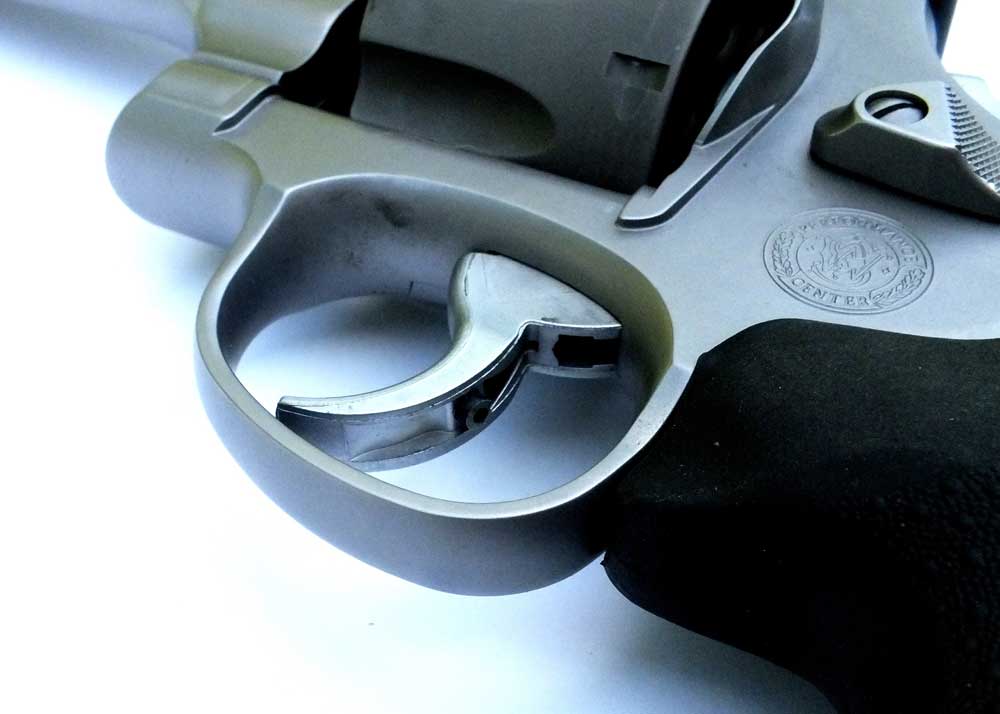 True to form, the trigger pull caused me no trouble at all, and while some might think this a little strange, many shooters find they shoot more accurately at moderate speeds with a double-action revolver. I suspect this is because pulling a long, light trigger forces a surprise break, and for most shooters better accuracy with a handgun comes when we don’t quite expect the shot.
True to form, the trigger pull caused me no trouble at all, and while some might think this a little strange, many shooters find they shoot more accurately at moderate speeds with a double-action revolver. I suspect this is because pulling a long, light trigger forces a surprise break, and for most shooters better accuracy with a handgun comes when we don’t quite expect the shot.
Drawing the 6 ½-inch barreled 929 from the modified Blade-Tech OWB holster was as easy as if I was drawing a 4-inch revolver because of the surgery performed. Results were excellent, with most of my shots staying in the ten ring with an occasional nine.
 Wanting Just A Bit More
Wanting Just A Bit More
Of course, all guns used for competition get tweaked, and I did find a couple of areas for improvement. My first complaint was more related to personal preference than general acceptance: I didn’t like the one-piece synthetic grips supplied on the 929 because they felt too narrow, and I’ve never been a fan of finger grooves. I like my hand higher on the gun than the finger grooves want them to be. Maybe it’s because I’m eligible for a monthly Social Security check, but I prefer the old standard wooden target S&W grips or the Pachmayr Presentation square-butt grips.
My second complaint related to reloading. In events like the Bianchi, where the 929 should shine, the reload isn’t done under time. Each stage has a par time, and the reload occurs between strings. For matches where the shooter reloads during shooting time, the as-delivered 929 would have been problematic because the loaded moon clips needed a bit of jiggling to get them to drop in.
This is an easy fix for a reasonably competent owner. After removing a screw and taking the cylinder off, a Dremel tool with the appropriate grinding spindle will allow putting a slight chamfer on each chamber. I watched a friend do this to his 929 and 986, and it isn’t hard, but on a Performance Center gun, Smith and Wesson should have taken care of this issue before the gun left the factory.
 The Bottom Line
The Bottom Line
In summary, this is a competition-ready revolver that’s capable of winning revolver or production class at a local plate, or Bianchi style match, straight out of the box with good ammunition. Almost all competitors will tweak it a bit, but it’s very good as it comes. With an MSRP of $1,189, you couldn’t modify another revolver to be as good for that money, and it has the bonus of shooting an economical caliber with lots of load options.
No wonder Jerry didn’t let his own version out of his sight.
Editor's Note: This article originally appeared in the Concealed Carry 2018 issue of Gun Digest the Magazine.

Next Step: Get your FREE Printable Target Pack
Enhance your shooting precision with our 62 MOA Targets, perfect for rifles and handguns. Crafted in collaboration with Storm Tactical for accuracy and versatility.
Subscribe to the Gun Digest email newsletter and get your downloadable target pack sent straight to your inbox. Stay updated with the latest firearms info in the industry.

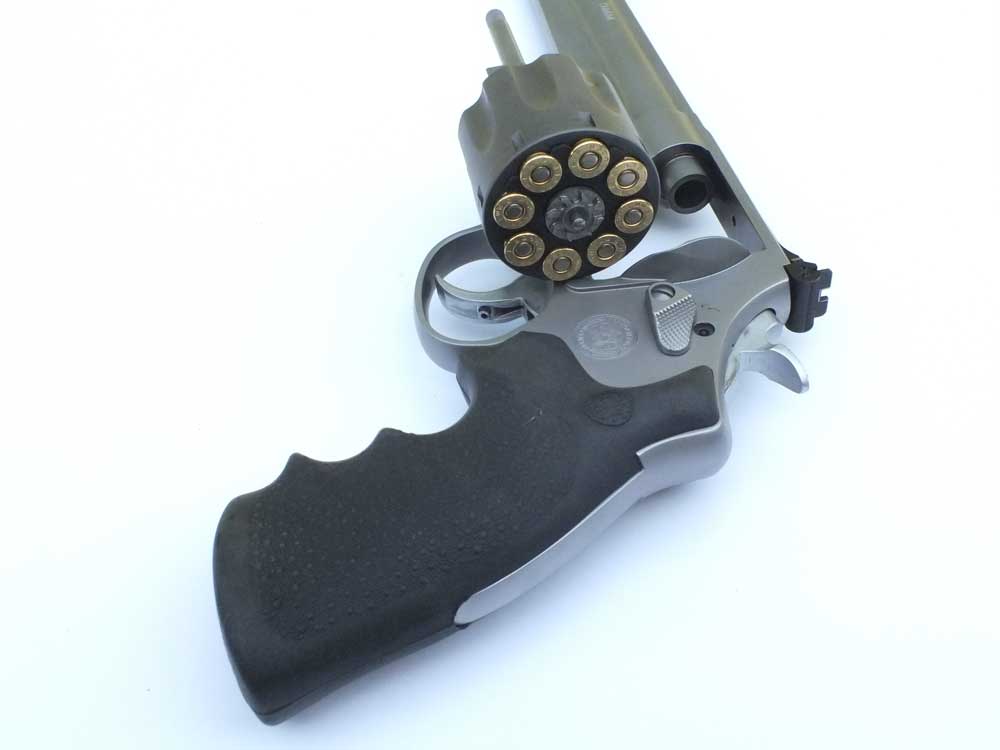
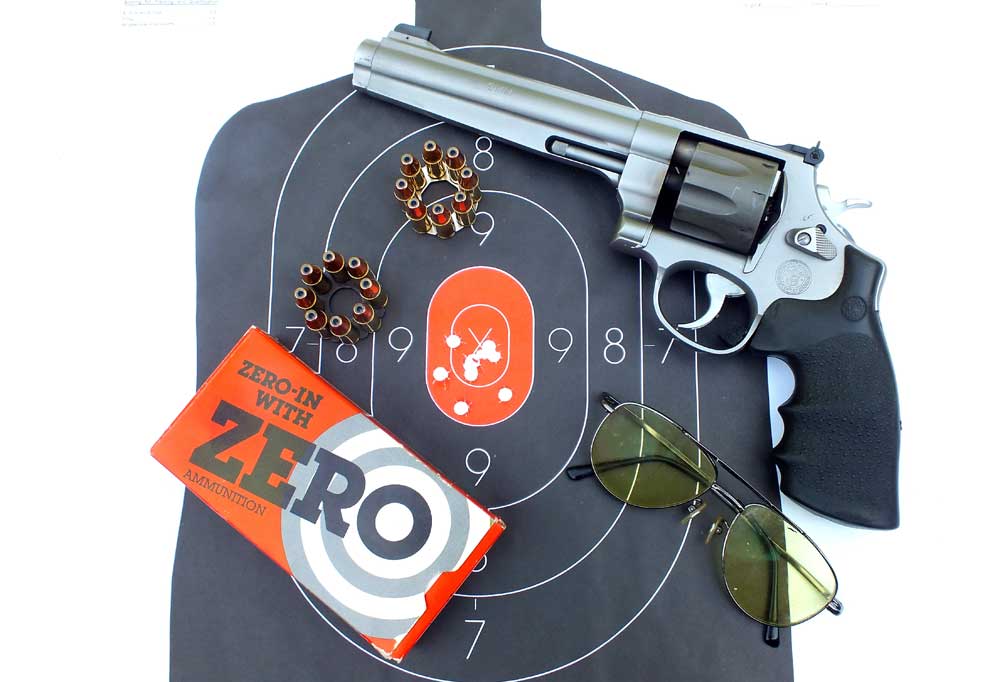 S&W’s 929 Wheeled ‘Nine’
S&W’s 929 Wheeled ‘Nine’ The True Test
The True Test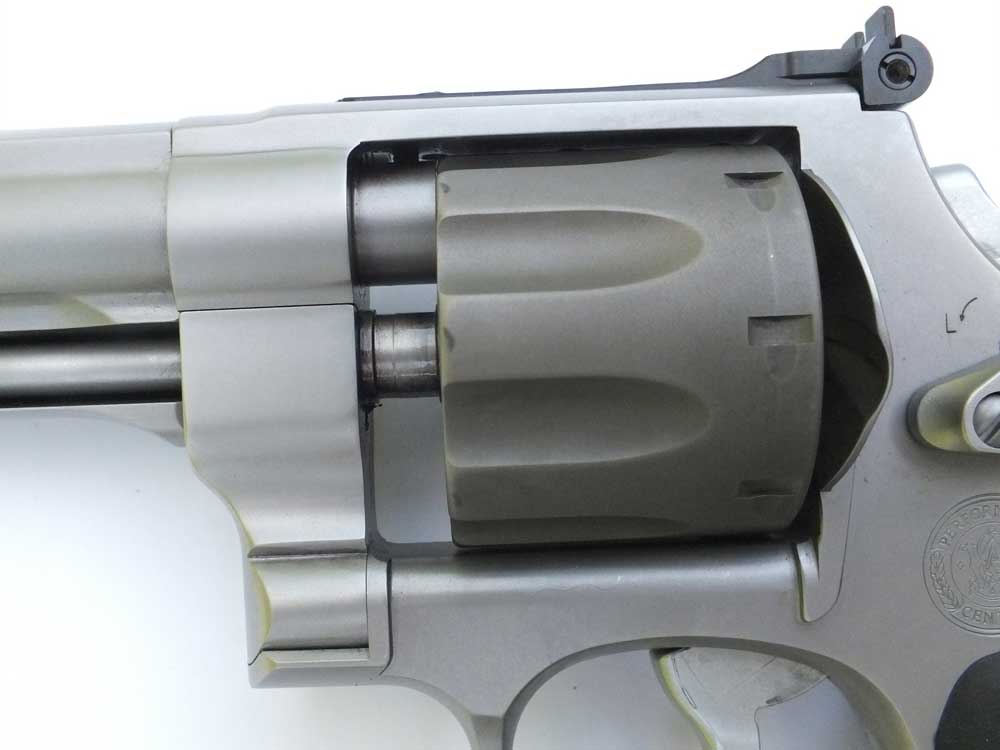 Dissecting The Details
Dissecting The Details Wanting Just A Bit More
Wanting Just A Bit More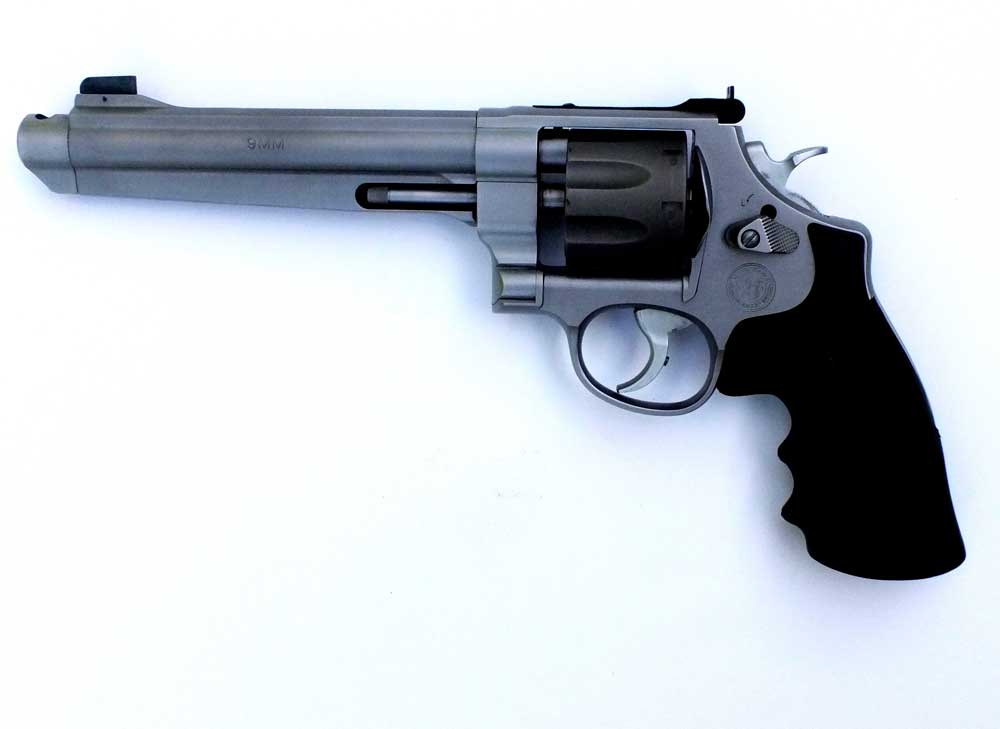 The Bottom Line
The Bottom Line![Best Concealed Carry Guns In 2025 [Field Tested] Wilson Combat EDC X9S 1](https://gundigest.com/wp-content/uploads/Wilson-Combat-EDC-X9S-1-324x160.jpg)


![Best 9mm Carbine: Affordable PCCs [Tested] Ruger Carbine Shooting](https://gundigest.com/wp-content/uploads/Ruger-Carbine-Shooting-100x70.jpg)
![Best AR-15: Top Options Available Today [Field Tested] Harrington and Richardson PSA XM177E2 feature](https://gundigest.com/wp-content/uploads/Harrington-and-Richardson-PSA-XM177E2-feature-100x70.jpg)
